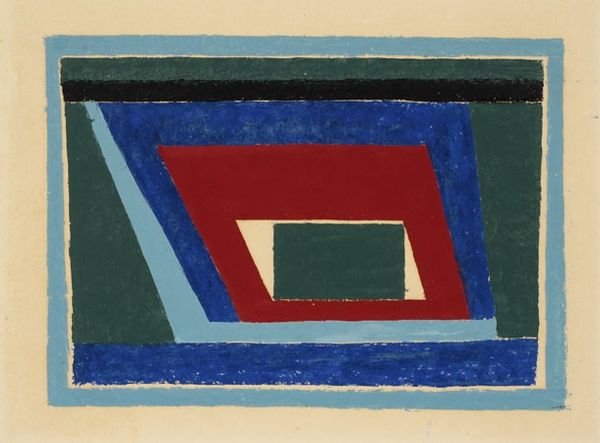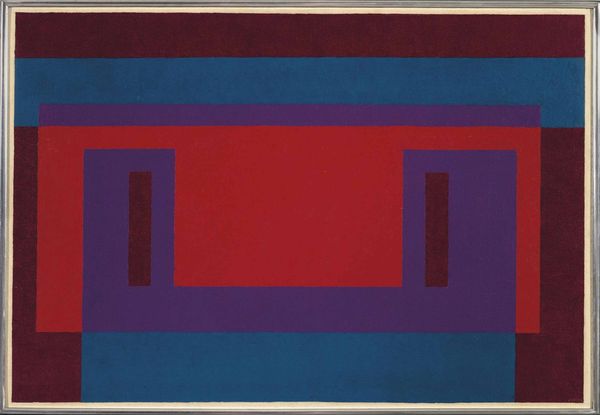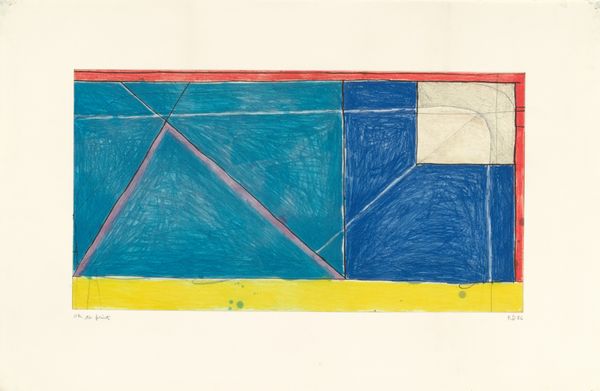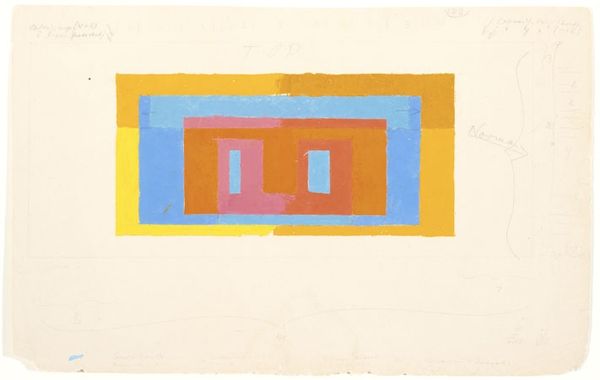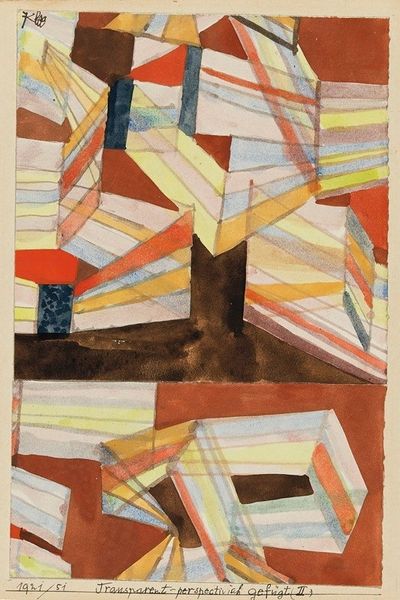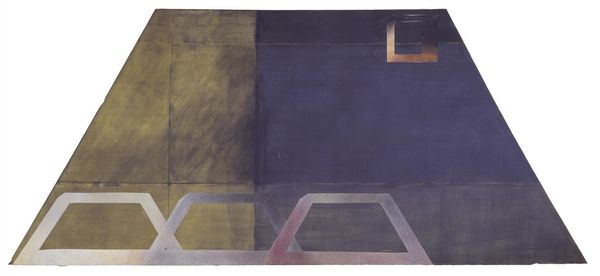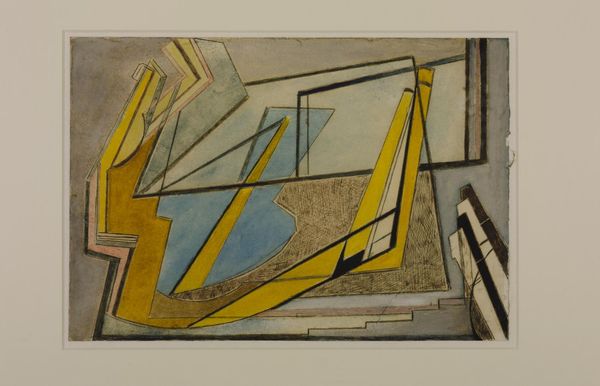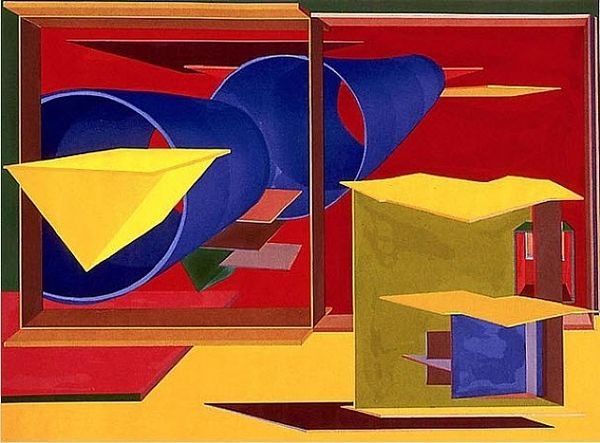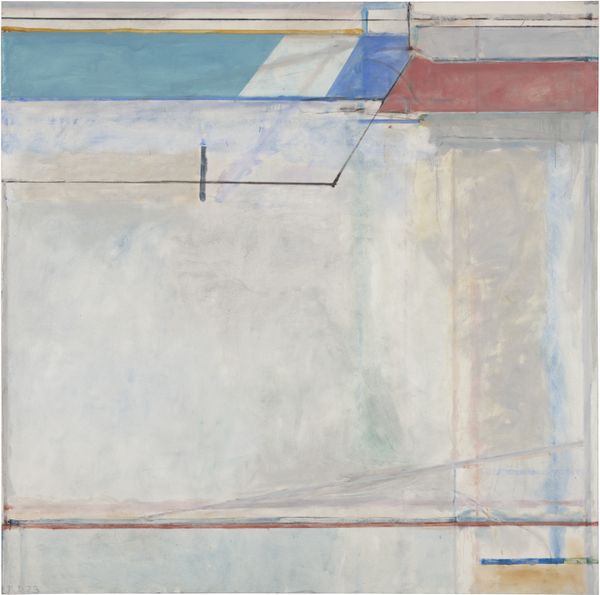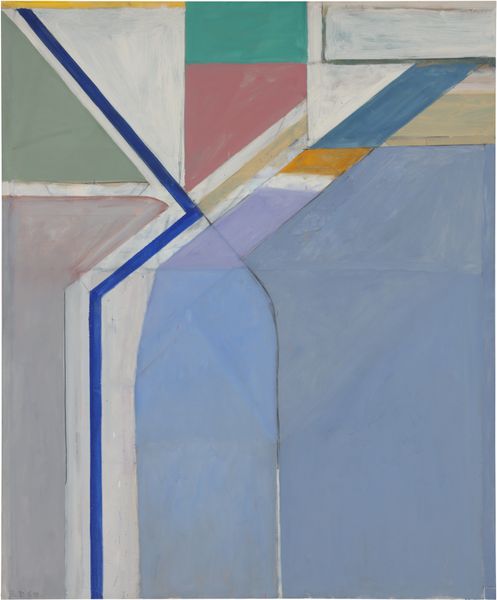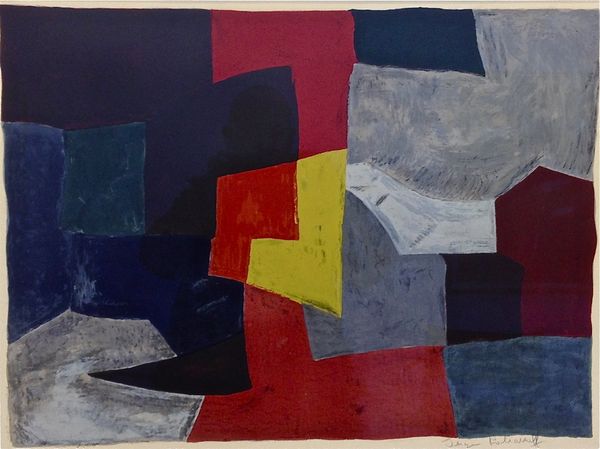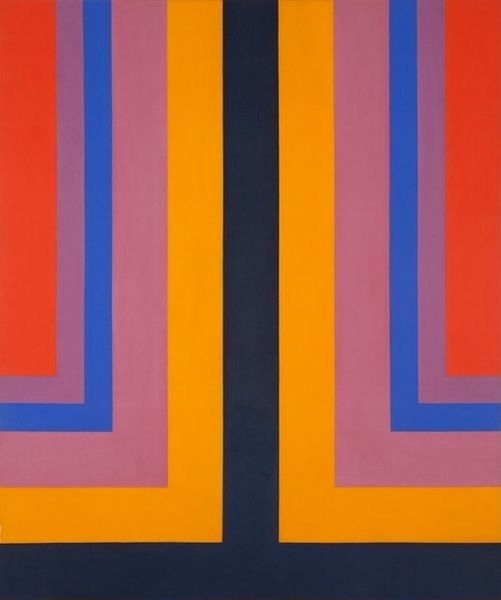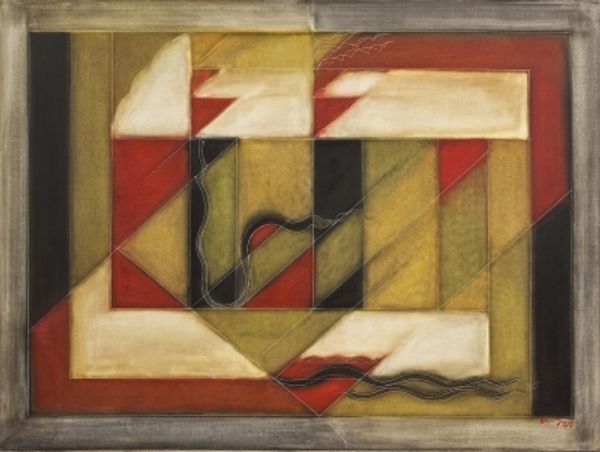
Dimensions: support: 2132 x 3174 x 160 mm
Copyright: © Richard Smith | CC-BY-NC-ND 4.0 DEED, Photo: Tate
Curator: Richard Smith's "Vista" presents such an intriguing use of space and color. The support measures over two meters high, giving it a real presence. Editor: I find the composition incredibly optimistic, almost like a blueprint for a utopian playscape. Curator: Smith often explored the relationship between painting and construction. You see it here in the layered, geometric shapes. The process of building up the image becomes part of its meaning. Editor: It also makes me think about gender and architecture in the mid-20th century. Were these spaces equally accessible, or were they designed with particular bodies and behaviors in mind? Curator: Considering the materiality, the canvas itself is relatively raw, which contrasts beautifully with the precise lines of the painted forms. It's not just about the visual; it's about how it was made. Editor: Right, and by examining the social and political context, we can see how these abstract forms are loaded with meaning about identity, space, and power. It gives "Vista" a potent contemporary resonance. Curator: I agree. Smith’s attention to the materiality of paint and form gives us a glimpse into the artist's process, as it allows us to look beyond traditional notions of painting. Editor: Indeed. It reminds me that art is never created in a vacuum. There is always the possibility of social and cultural interpretation.
Comments
Join the conversation
Join millions of artists and users on Artera today and experience the ultimate creative platform.
tate 8 months ago
⋮
During the early 1960s, British born painter Richard Smith made paintings that combined aspects of British Pop Art with those of American abstraction. In Panatella 1961(Tate T01199), Smith combined veiled reference to popular, everyday subject matter with painterly technique. Blowing up the tiny logo from a cigar wrapper to monumental, billboard like proportions, Smith explored the methods employed by the mass media to transform ordinary products into desirable, fashionable commodities. The layered paint surface of the image appears to radiate light as if it were a glowing cinema screen or a Byzantine icon. Such handling of paint subtly enhances the painting's allure. Panatella was painted while Smith was in New York on a two year Harkness Fellowship. Returning to London in 1961, he continued to explore the interface between the methods of advertising and abstract, modernist painting. Rather than focusing on images drawn from popular culture as he had done, Smith began to concentrate on packaging itself. This led to a fascination with boxes, particularly cigarette boxes. In 1962 he made a film called Trailer which featured close-ups of cigarette packs, repeated and seen from different angles. At about this time cigarette packs seen in isomorphic perspective began to appear in his paintings. In 1966, discussing his interest in packaging he wrote: The kind of images I was using then were based on cartons, or boxes. The carton is an incessant theme in present-day civilisation: shops are full of boxes and you see these before you see the goods; they practically stand in for the goods - it is not just a question of labelling or depiction. Everything comes in boxes: you buy boxes when you are shopping, you do not buy visible goods; you don't buy cigarettes, only cartons. The box is your image of the product.'(Quoted in Robertson, p.11.) Vista develops these preoccupations and, like Smith's earlier work, it is a large, colourful billboard-like painting which concentrates upon a single motif. The image of a cigarette pack viewed from above is repeated in sequence. This creates an illusion of depth or recession, one pack seeming to stand inside another. Employing the simple presentational technique of increasing scale, the boxes appear to zoom forwards towards the spectator, Smith mimicing advertising techniques which aggressively seek to grab the attention of the viewer. The colour scheme of the painting serves to enhance this effect, the bright red of the first box leaping forwards, and the blue tones of the boxes behind seeming to recede. However, in order to enhance the zoom effect and concentrate more exclusively on the cigarette pack motif, Smith shaped the canvas, adding a painted extension to the rectangular canvas. The extension was also intended to suggest the shadow cast by the last box. In an unpublished Tate interview of 1967 he stated: 'This was the first painting with an extension, an extension of pretty modest dimensions. These extensions were introduced as a way of tailoring the canvas shape to the canvas image. The base canvas always remained rectangular and the extension tended to repeat the drawn shape within that …The basic image is the front view of a box with the shadow of the box extending to the next depiction of the box and its shadow extending to the next and so on.' Vista was one of the first paintings in which Smith began to explore the relation between two and three dimensions, painting and sculpture, illusion and reality. Continuing to focus on packaging while employing a painterly approach, Smith would further develop the shaped canvasses until they became fully three dimensional, thus further undermining the distinction between painting and sculpture. Further Reading:David Mellor, The Sixties Art Scene in London, exhibition catalogue, Barbican Art Gallery, London 1993, pp.124-131Marco Livingstone, Pop Art: A Continuing History, London 1990, pp.109-111Bryan Robertson, Richard Smith Paintings 1958-1966, exhibition catalogue, Whitechapel Art Gallery, London 1966, reproduced p.31Richard Smith, Seven Exhibitions 1961-1975, exhibition catalogue, Tate Gallery, London 1975 Imogen Cornwall-Jones October 2001
